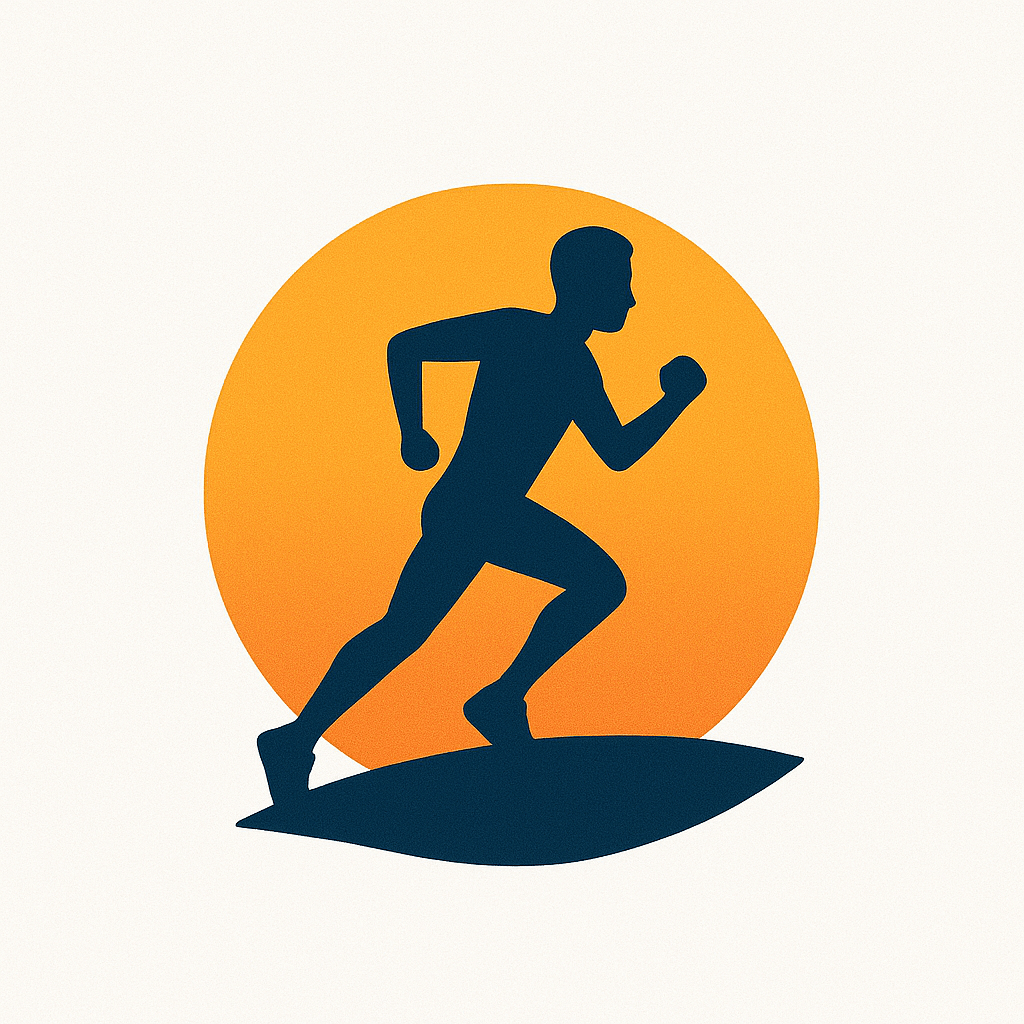When Your Mind Won’t Stop Racing
You know the feeling — heart pounding, thoughts looping, jaw tight, and a sense of doom that won’t let go. Anxiety doesn’t always announce itself loudly. Sometimes, it just hums quietly beneath everything, wearing you down.
And when you’re stuck in that mental spiral, the idea of running might feel counterintuitive. Why would I move faster when I already feel overwhelmed?
But here’s the truth: you don’t run to escape anxiety — you run to find your center.
Running isn’t just a physical activity. It’s a nervous system reset, a tool to ground yourself, a way to gain control when your brain is spinning.
Let’s break down exactly how running helps with anxiety — and more importantly, how you can use it in real life to feel better, not worse.
Why Running Is a Natural Antidote to Anxiety
The Science: How Running Regulates the Nervous System
When you’re anxious, your body is in fight-or-flight mode. Cortisol and adrenaline flood your system. Your heart races, your breath shortens, and your thoughts go haywire.
Running taps directly into this system — but here’s the twist: it helps bring you back to balance.
Here’s how:
- Cortisol regulation: Regular aerobic activity reduces excess cortisol levels, making your stress response less intense over time.
- Adrenaline outlet: Movement gives your body a safe, productive way to release that pent-up energy.
- Boosted GABA: GABA (gamma-aminobutyric acid) is a neurotransmitter that calms the brain. Running increases GABA production, helping reduce anxious thoughts.
- Parasympathetic activation: After your run, your body engages the “rest and digest” system — lowering heart rate and inducing calm.
Running helps your brain stop treating daily life like an emergency.
Movement as Mindfulness in Motion
You’ve probably heard about mindfulness for anxiety. The idea is to bring yourself into the present moment, anchoring your awareness.
Running does this beautifully. The rhythm of your feet, the cadence of your breath, the shifting scenery — it all becomes a moving meditation.
You don’t need to sit cross-legged on a cushion. You just need to step outside and let your body lead. Running disrupts the anxious narrative. It gives your mind a break. It brings you home to the now.
Real Strategies That Help You Run Through Anxiety
Start with Intention: Anxiety-Aware Run Planning
Not every run needs to be long or intense. In fact, when you’re anxious, less is often more.
Start with intention:
- Time it well: Mornings can help ground your nervous system before the day’s stress hits.
- Pick a calming route: Choose familiar, safe, scenic environments. Trails and quiet neighborhoods work well.
- Run by feel, not numbers: Leave your watch behind. No paces, no goals — just presence.
You can also pair your run with pre-run rituals that calm the system:
- Try 3–5 minutes of deep breathing before heading out
- Journal your anxious thoughts, then leave them on the page
- Set a simple mantra like “One breath. One step.”
Use Grounding Techniques While You Move
Don’t just run through anxiety. Run with it — using tools that help you stay grounded:
- The 5-4-3-2-1 technique:
- 5 things you can see
- 4 things you can touch
- 3 things you can hear
- 2 things you can smell
- 1 thing you can taste
This sensory scan connects you to your environment and calms mental spiraling.
- Mantra running:
- Sync short affirmations with your steps: “I am okay.” “This will pass.” “One breath, one step.”
- Body scan while moving:
- Notice how your feet hit the ground, how your arms swing, how your breath flows — and gently soften any tension.
These tools anchor your mind when anxiety tries to pull you into future fear or past regret.
Post-Run Cooldowns for Mental Clarity
What you do after the run is just as important as the run itself.
- End with a few minutes of walking. Let your body and heart rate settle naturally.
- Practice a breathing exercise like box breathing (4–4–4–4 count).
- Reflect. Voice memo how you feel. Journal what shifted. Anchor the mental relief.
This cool-down becomes a ritual — a mental “seal” on the calming effects of your run.
What to Watch For: When Anxiety Hijacks Your Run
Know Your Triggers and Plan with Compassion
Sometimes, anxiety follows you mid-run — especially if you’re in unfamiliar environments or pushing too hard.
If this happens:
- Slow down. Walk or pause — it’s not failure.
- Shift to a walk-run format to stay regulated.
- Switch routes to something more open, quiet, or scenic.
- Put on calming music or guided running meditations (apps like Headspace or Nike Run Club offer great options).
Don’t push through panic. Adjust. Listen. That’s how you build a long-term relationship with running — not through grit, but through kindness.
Running Isn’t Always the Right Tool — And That’s Okay
Sometimes anxiety is bigger than a run can carry. And that’s not weakness. It’s reality.
If you’re experiencing:
- Persistent panic attacks
- Difficulty sleeping or eating
- Constant racing thoughts
- Emotional numbness or dread
… then it’s time to expand your toolkit. Pair running with therapy, medication, or other proven methods. You’re not “failing” — you’re being smart and self-respecting.
You Can’t Outrun Anxiety, But You Can Move Through It
Anxiety will try to convince you to freeze. To stay inside. To stay stuck.
Running helps you remember: you’re not your fear. You’re not your thoughts. You are a body in motion — strong, alive, capable.
You don’t need to run fast. You don’t need to run far.
You just need to move.
Every step you take through anxiety is an act of courage. Every breath you steady is proof that calm is possible. Every run is a reminder: you are not alone in this.
You may not outrun anxiety. But you can meet it on your terms — and move through it, one stride at a time.






Leave a Reply